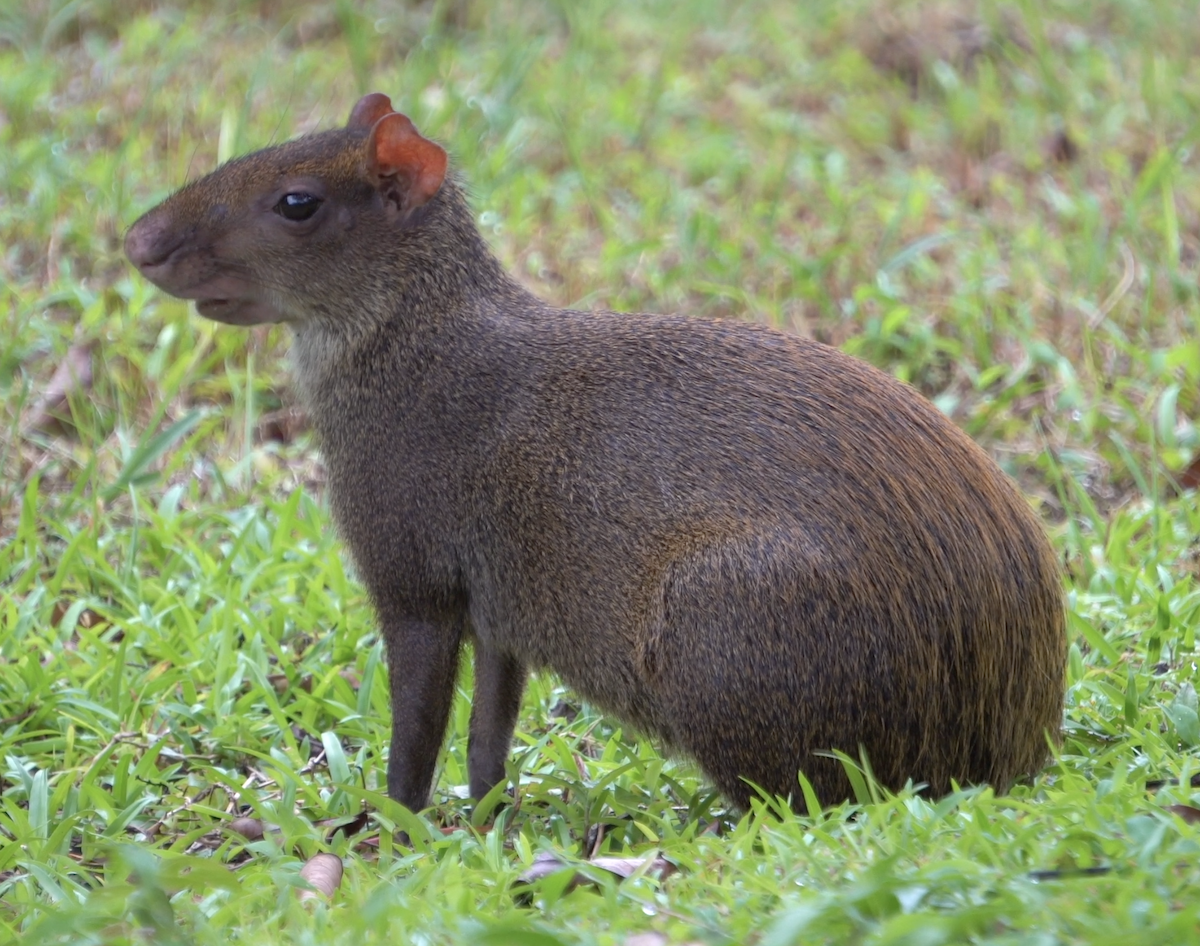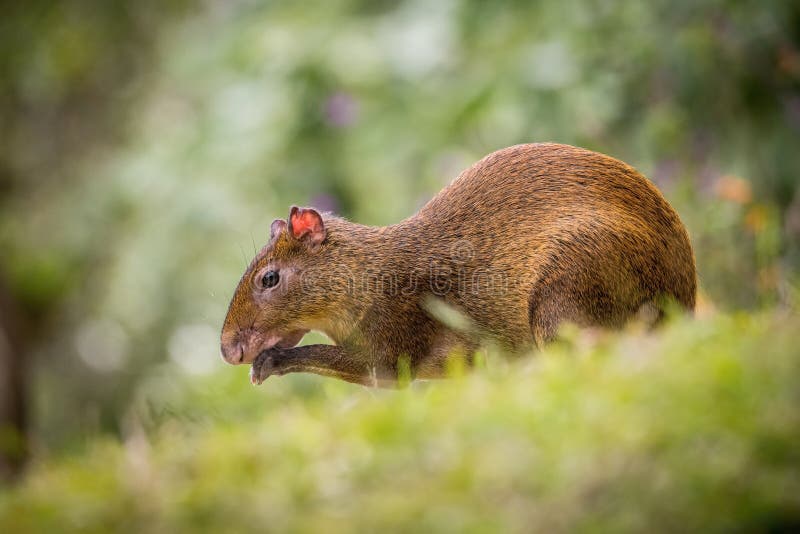Discover The Beauty Of Agouti Hair: A Comprehensive Guide
Agouti hair is a fascinating phenomenon that has captured the attention of scientists, hair specialists, and beauty enthusiasts alike. This unique hair pattern, characterized by its banded pigmentation, offers a glimpse into the intricate mechanisms of hair biology. If you're curious about what agouti hair is and how it affects hair color and texture, you're in the right place.
In this article, we'll dive deep into the world of agouti hair, exploring its origins, characteristics, and implications. Whether you're a researcher, hairstylist, or simply someone interested in understanding the science behind hair, this guide will provide you with all the information you need.
From understanding the genetic factors that influence agouti hair to exploring its cultural significance, we'll cover everything you need to know. Let's embark on this journey to uncover the mysteries of agouti hair and its impact on human appearance.
Read also:Experience The Thrill Of Skydiving In San Diego Your Ultimate Adventure Guide
Table of Contents
- What is Agouti Hair?
- The Genetic Basis of Agouti Hair
- Characteristics of Agouti Hair
- The Pigmentation Process in Agouti Hair
- Cultural Significance of Agouti Hair
- Care Tips for Agouti Hair
- Common Myths About Agouti Hair
- Scientific Studies on Agouti Hair
- Comparison with Other Hair Types
- Conclusion and Call to Action
What is Agouti Hair?
Agouti hair refers to a specific pattern of pigmentation in hair strands, where alternating bands of light and dark colors create a unique visual effect. This phenomenon is not exclusive to humans; it is also observed in animals such as squirrels and rabbits. The term "agouti" originates from the agouti gene, which plays a crucial role in determining the distribution of pigments in hair.
This type of hair is characterized by its distinct banding pattern, which results from the cyclic production of eumelanin (black or brown pigment) and pheomelanin (red or yellow pigment). The interplay between these pigments gives agouti hair its signature appearance.
How Does Agouti Hair Form?
The formation of agouti hair is influenced by genetic factors, particularly the agouti signaling protein (ASIP). This protein regulates the switch between the production of eumelanin and pheomelanin in hair follicles. When ASIP is active, it promotes the production of pheomelanin, leading to lighter bands in the hair shaft. Conversely, when ASIP is inactive, eumelanin production dominates, resulting in darker bands.
The Genetic Basis of Agouti Hair
Understanding the genetic basis of agouti hair requires a closer look at the agouti gene and its role in pigment production. The agouti gene is responsible for controlling the distribution of pigments in hair, skin, and other tissues. Variations in this gene can lead to different patterns of pigmentation, including the banded appearance seen in agouti hair.
Key Genetic Factors
- Agouti Signaling Protein (ASIP): This protein regulates the switch between eumelanin and pheomelanin production.
- MC1R Gene: The melanocortin 1 receptor gene interacts with ASIP to determine the balance of pigments in hair.
- TYR Gene: The tyrosinase gene is involved in the synthesis of melanin, which is essential for hair pigmentation.
Characteristics of Agouti Hair
Agouti hair is distinguished by several key characteristics that set it apart from other hair types. These include:
- Banding Pattern: Alternating bands of light and dark pigmentation create a striking visual effect.
- Texture Variation: Agouti hair can vary in texture, ranging from fine and silky to coarse and wiry.
- Color Diversity: The color of agouti hair can range from light brown to deep black, depending on the balance of eumelanin and pheomelanin.
Visual Appeal
The banded pattern of agouti hair gives it a natural sheen and depth, making it highly desirable in the beauty industry. Many people with agouti hair find that it enhances their overall appearance, providing a unique and captivating look.
Read also:Film13 Gyaru A Comprehensive Exploration Of The Gyaru Culture Through Film
The Pigmentation Process in Agouti Hair
The pigmentation process in agouti hair involves a complex interplay of genetic and environmental factors. Melanocytes, the cells responsible for producing melanin, play a crucial role in this process. These cells are located in the hair follicles and are influenced by the agouti signaling protein and other genetic regulators.
Research has shown that the pigmentation process in agouti hair is highly dynamic, with changes occurring throughout the hair growth cycle. This dynamic nature contributes to the variability in color and texture observed in agouti hair.
Factors Affecting Pigmentation
- Genetic Variation: Differences in the agouti gene can lead to variations in pigmentation patterns.
- Environmental Factors: Exposure to sunlight and other environmental conditions can influence the production of melanin.
- Hormonal Changes: Hormonal fluctuations, such as those during pregnancy or menopause, can affect hair pigmentation.
Cultural Significance of Agouti Hair
Agouti hair holds cultural significance in many societies, often symbolizing beauty, strength, and individuality. In some cultures, people with agouti hair are considered to possess unique qualities that set them apart from others. This perception has contributed to the popularity of agouti hair in fashion and beauty trends.
Historically, agouti hair has been associated with certain ethnic groups, where it is celebrated as a symbol of heritage and identity. Today, it continues to inspire hairstylists and designers who seek to incorporate its unique characteristics into their work.
Celebrating Diversity
The cultural significance of agouti hair lies in its ability to celebrate diversity and promote inclusivity. By embracing the uniqueness of agouti hair, we can foster a greater appreciation for the diversity of human appearance.
Care Tips for Agouti Hair
Proper care is essential for maintaining the health and appearance of agouti hair. Given its unique characteristics, agouti hair requires specific attention to ensure it remains vibrant and strong. Below are some care tips for agouti hair:
- Use Gentle Shampoos: Choose shampoos that are free from harsh chemicals to avoid stripping the hair of its natural oils.
- Moisturize Regularly: Apply moisturizing products to keep the hair hydrated and prevent dryness.
- Protect from Sun Exposure: Use hats or scarves to protect agouti hair from excessive sun exposure, which can damage the pigmentation.
Professional Advice
Consulting with a professional hairstylist who understands the needs of agouti hair can provide valuable insights into maintaining its health and appearance. Regular trims and treatments can help keep agouti hair looking its best.
Common Myths About Agouti Hair
There are several myths surrounding agouti hair that can lead to misconceptions about its characteristics and care. Below, we debunk some of the most common myths:
- Myth: Agouti Hair is Always Coarse: While some agouti hair may be coarse, it can also be fine and silky, depending on genetic factors.
- Myth: Agouti Hair Cannot Be Dyed: Agouti hair can be dyed, but it may require special techniques to achieve the desired color.
- Myth: Agouti Hair is Rare: While agouti hair is less common than other hair types, it is not rare and can be found in various populations worldwide.
Scientific Studies on Agouti Hair
Scientific research has shed light on the mechanisms behind agouti hair, providing valuable insights into its formation and characteristics. Studies have focused on the role of the agouti gene and its interaction with other genetic factors in determining hair pigmentation.
One notable study published in the Journal of Investigative Dermatology examined the effects of the agouti signaling protein on melanocyte activity. The study found that ASIP plays a critical role in regulating the production of eumelanin and pheomelanin, contributing to the banded pattern observed in agouti hair.
Implications for Future Research
Further research into agouti hair could lead to breakthroughs in understanding hair biology and developing treatments for hair-related conditions. By unraveling the complexities of agouti hair, scientists hope to unlock new possibilities for enhancing hair health and appearance.
Comparison with Other Hair Types
Agouti hair differs from other hair types in several ways, including its pigmentation pattern, texture, and growth characteristics. Below is a comparison of agouti hair with other common hair types:
- Black Hair: Black hair is characterized by high levels of eumelanin and lacks the banded pattern seen in agouti hair.
- Blonde Hair: Blonde hair contains more pheomelanin than eumelanin, resulting in a lighter color without the alternating bands.
- Red Hair: Red hair is dominated by pheomelanin, giving it its distinctive color, but it does not exhibit the banded pattern of agouti hair.
Unique Qualities
The unique qualities of agouti hair make it stand out in the world of hair types. Its banded pattern and dynamic pigmentation process offer a fascinating glimpse into the complexity of human biology.
Conclusion and Call to Action
In conclusion, agouti hair is a remarkable phenomenon that showcases the intricate mechanisms of hair biology. From its genetic basis to its cultural significance, agouti hair offers a wealth of knowledge and inspiration for those interested in understanding the science behind hair.
We encourage you to explore further by sharing this article with others who may find it interesting. Feel free to leave a comment below with your thoughts or questions about agouti hair. Additionally, consider exploring other articles on our site for more insights into the world of hair and beauty.


